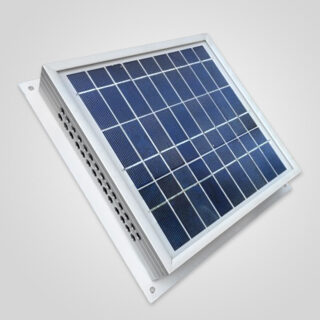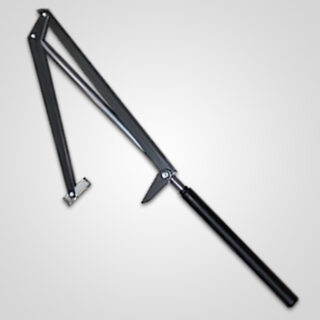Why you may need to protect your plants from the heat in a summer greenhouse? Every second novice gardener decides to install a greenhouse in his garden. And he believes that this construction alone will immediately solve any problems associated with the cultivation of heat-loving crops. Unfortunately, this is far from the case.
The first surprise that you may encounter is related to temperature changes. In most areas of our country there is a large difference between day and night temperatures, especially in late spring and early summer. As a result, plants can overheat during the day and become supercooled at night. And in the summer, the plants simply begin to wither from the excessively high temperature in the greenhouse. Let’s figure out how to fix this problem and ensure a healthy future for your crop.
What conditions should be maintained in the greenhouse
In July, the temperature inside the greenhouse can reach 105-115 degrees, and this is unacceptable, since pollen is already sterilized at 85 degrees. The optimal temperature and humidity depend on what specific crops you grow in your greenhouse. Different plants require different conditions:
| Day air temperature, °F | Night air temperature, °F | Soil temperature, °F | Air humidity, % | |
| Cucumbers | 75-80 | 62-68 | 70-73 | 75-85 |
| Tomatoes | 68-72 | 64-68 | 68-72 | 60-70 |
| Pepper | 77-81 | 68-72 | 73-77 | 65-75 |
| Eggplant | 77-82 | 68-72 | 72-77 | 50-60 |
As you can see, the joint cultivation of some crops is simply impossible without losses. If you want to always have good yields and healthy plants, combine crops correctly.
How to lower the temperature in your summer greenhouse
Get in the habit of opening the greenhouse doors every time you go outside. So you can stabilize the temperature a little by releasing warm air from it. However, an open door alone in the July heat may not be enough. In this case, you can resort to more radical methods:
- Greenhouse painting. The most popular method in the post-Soviet space. If you do not want the sun to heat up the greenhouse through transparent surfaces, paint over some of them with lime, chalk or clay paint. At the same time, you need to paint from the inside, otherwise the first heavy rain will wash away all your efforts. This method is suitable for glass and polycarbonate greenhouses. If you have film walls, then you won’t be able to paint them;
- Shelter from the sun. Create some shelter structures on the south and east sides of the greenhouse, as well as on top. As a material for shelter, ordinary burlap, any dense fabric or protective reflective nets are suitable;
- Planting plants with lush foliage. The method is unusual, but quite effective. The dense foliage of green plants will help protect your fruits from the relentless summer sun. Ideally, you can use those bushes and vines that are used to create hedges. True, here you need to understand that the foliage will cover the light in any weather. And if the summer turns out to be cold and rainy, then this can play a cruel joke on your harvest;
- Ventilation. Ventilation elements must be provided in the greenhouse. At least a few vents to create a draft. If not, be sure to make holes yourself. Modern models of greenhouses, thanks to their modular design, allow you to open part of the walls and roof for flexible temperature control;
- Fans. They come to the rescue in situations where there is only one window in the greenhouse, and it is not possible to make a second one. Then you can put a few fans to create the effect of artificial ventilation. True, in this case, be prepared for the additional costs of paying electricity bills.
The above methods can be used singly or in combination. It all depends on how much you need to lower the temperature.
How to increase the humidity inside your greenhouse
After the problem with the increased temperature is solved, it remains to deal with the humidity. With a lack of moisture, the plants will dry out quickly, with an excess, they will rot and be subject to fungal infections. But if you can lower the humidity by simply ventilating the greenhouse, then with an increase everything is not so simple.
What can be done here:
- Irrigation of paths with water. The easiest and most affordable method is watering. But if you water the plants too often, it will only harm them. Water will wash away nutrients from the soil, which will not be slow to affect the condition of the crops. Instead, it is better not to water the beds themselves, but the paths you walk along. Watering is preferably carried out before lunch, so that during the day the moisture completely evaporates and does not cause night dampness;
- Steam generators and sprayers. A more expensive but more efficient method. Installing special water sprayers and steam generators will help to regulate the level of humidity in a wide range.
True, you will always have to have water in stock, otherwise there will be sudden changes in humidity, which are no less harmful to plants than temperature changes.
It is better to think about creating suitable conditions for plants in the summer season even in winter. By prepping early, you can get everything done before the crops begin to wither and die. And if you are just planning to put a greenhouse on your site, be sure to think over its design at the construction stage, otherwise you risk losing the very first harvest.
-
 Louver$ 120.00
Louver$ 120.00 -
 Solar Thermostatic Fan$ 189.00
Solar Thermostatic Fan$ 189.00 -
 Automatic Window Openers$ 79.99
Automatic Window Openers$ 79.99
